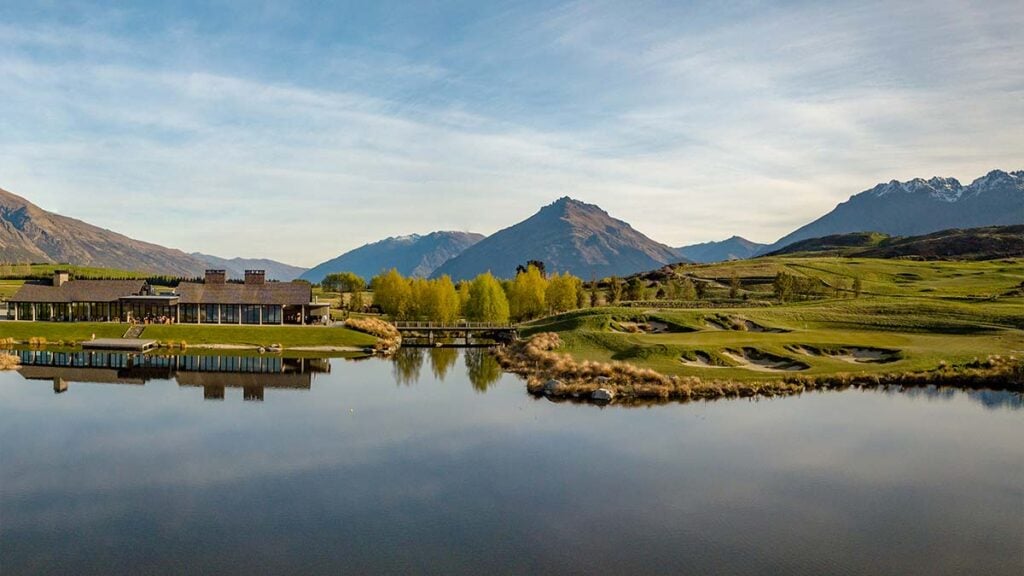Professional golf can require a dizzying amount of maths. Distance to cover a bunker and to the pin, wind and elevation, how high a ball should fly and how quickly it should stop. The funny part about the US Open at Oakmont Country Club is players would much prefer the complicated shots over the kind that require no calculation at all.
If Oakmont represents one of the most difficult tests in professional golf, in at least one sense it will be starkly simple: a shot from the fairway means a player can think about how he wants to play the shot to the green, whereas a ball in the rough will suggest he shouldn’t even bother.
RELATED: The three shots you need to win the US Open
“If you don’t get a good lie, it doesn’t matter how far up the hole you are, it’s just a lay-up,” said European veteran Edoardo Molinari. “Yesterday, I missed the fairway by 10 yards and and I could only hit it 40 yards… It’s almost like playing a golf course with water left and right for 18 holes.”
The Oakmont rough, a dense five-inch long hybrid of Kentucky bluegrass, ryegrass and Poa annua, encapsulates a central criticism of US Open setups because it eliminates strategy. Either you avoid it or you don’t, with little ambiguity in between. In 2007, Phil Mickelson called the Oakmont rough “dangerous”, and he wasn’t just referring to double-bogeys. In a pre-tournament scouting mission, he injured his wrist playing out of it, then missed the cut in the championship at 11-over-par.

Photo: David Cannon
If a trip to the ER is the worst outcome, not far behind is losing a ball outright. “I’m glad we have spotters up there because I played last Monday and you hit a ball off the fairway and you were looking for a good couple of minutes just to find it,” Rory McIlroy said.
Once you find it, there’s still a risk the ball will stubbornly remain put. According to Martin Broulliette, a professor of mechanical engineering and a member of the Golf Digest’s technical panel, heavy rough can get caught in the hosel and close the face, effectively reducing loft.
“Clubs will turn over. You’re going to see guys trying to hit pitching wedge out and it’s going to go 45 degrees left because that’s how thick the rough is,” two-time major champion Collin Morikawa said. “You have to be steep to get to the ball in the rough, and when you’re steep, it de-lofts the face, so you’re just hitting it deeper into the earth. It’s very, very hard.”
It might be boring, but the hack back into the fairway at least steers clear of disaster. Some of the exceptions will be due to luck: grass trampled down by foot traffic, the occasional fortuitous divot. Then there’s the matter of grain. A ball downgrain has a better chance of emerging from the rough, whereas a ball sitting into the grain of the rough is doomed. Even here, the USGA appears to have a cheering interest.
“When we played yesterday, they were raking all the rough into the grain,” Molinari said.
The simplest solution to all this, of course, is to drive the ball in the fairway, but at an average of 28 yards wide, Oakmont’s will also be seven yards narrower than those at Pinehurst No.2 last year. In the past two US Opens at Oakmont, in 2007 and 2016, the cost of the rough was measured by the USGA at 0.58 and 0.41 strokes, respectively, yet either out of conviction or wishful thinking, some players insist the consequence doesn’t have to be so severe. If a ball is close enough to the green, they said, it would be worth trying to get it there, especially if there’s room to run the ball up.
“There’s no such thing as complete hack-out rough,” Justin Thomas said. “You’re going to get some lies that are decent, but you’re going to have some tempting lies where guys might try to push the envelope when they shouldn’t.”




